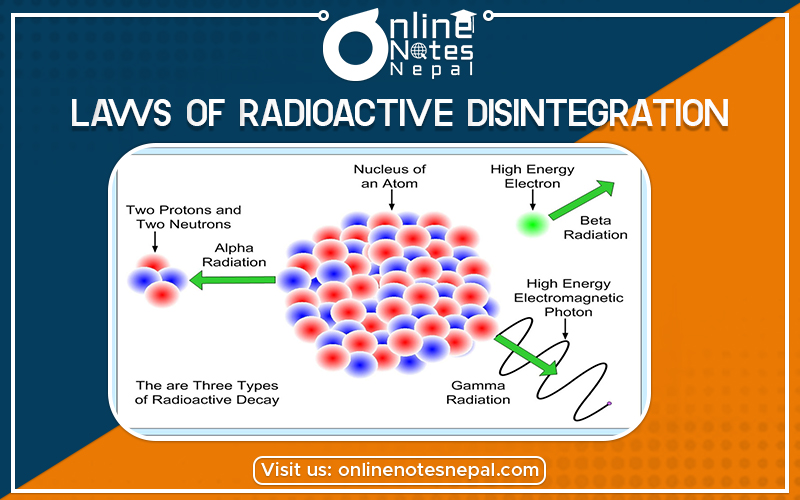Published by: Zaya
Published date: 25 Jun 2021

The rate of radioactive material disintegration is independent of physical and chemical conditions. The number of an atom that breaks up at any instant is proportional to the number of atoms present at that instant. Let N be the number of atoms present in a particular radioactive element at a given instant t. Then the rate of decrease -dN/dt is proportional to N.

here \lambda is constantly known as disintegration constant or decay constant of the radioactive element. It is defined as the ratio of the substance which disintegrates in unit time to the amount of substance present


Equation (1) can be written as

Integrating we get here C is constant of integration
Let N_0 be the number of radioactive atoms present initially.
Then when t = 0 , N = N_0
Therefore, log_e N_0 = C
Substituting for C in (2) we get



This equation shows that the number of atoms on taken radioactive elements decreases exponentially with time. Theoretically, infinite time is required for radioactivity to disappear completely and this is the same for all elements. Hence to compare two element’s radioactive properties, a quantity called half-life period is used.
Half-life period: The half-life period of a radioactive substance is defined as the time required for one half of the radioactive substance to disintegrate. For any given radioactive element, at the end of time, T_{1/2} only 50% of the radioactive atoms remain unchanged and at the end of 2T_{1/2} only 25% remain and at the end of 3T_{1/2} 12.5% remain and after 4T_{1/2} 6.25% remains and so on.